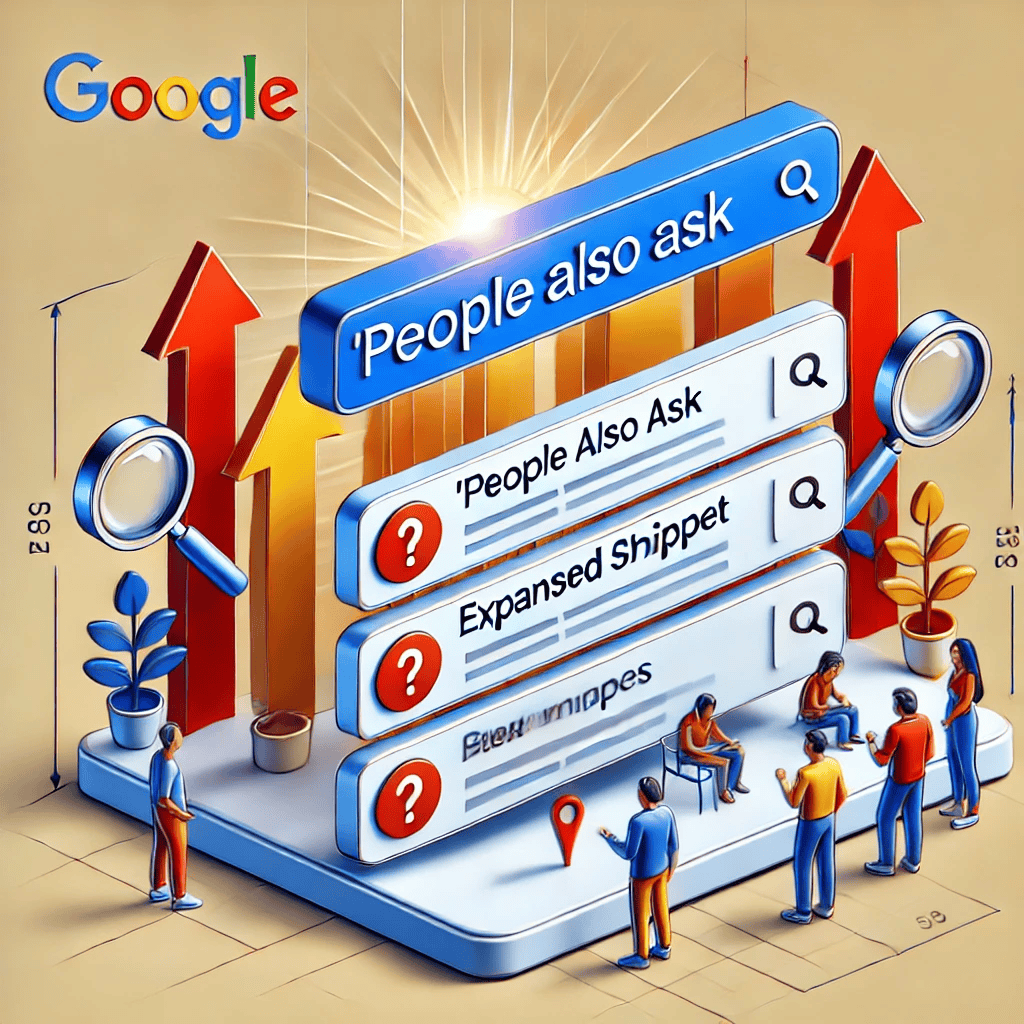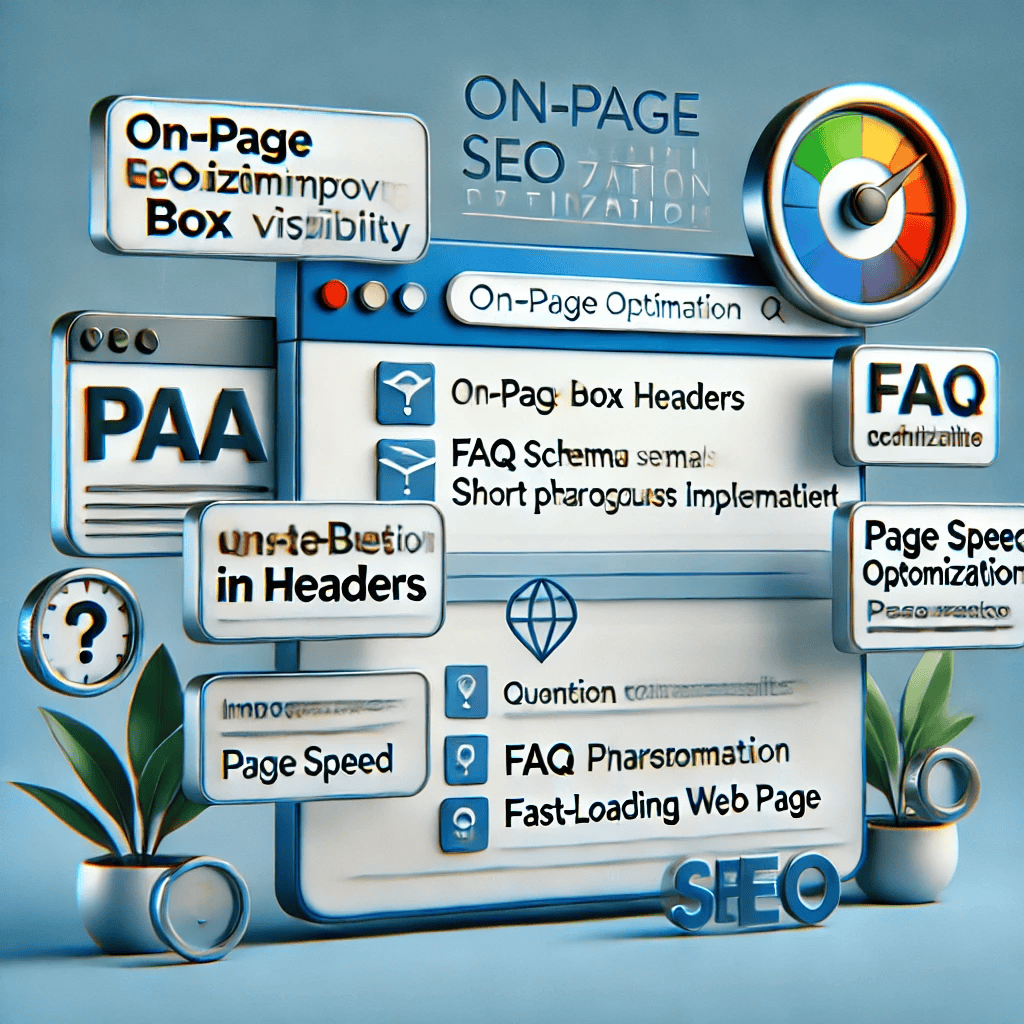1. Understand the “People Also Ask” Box
The PAA box typically appears on Google’s search results page, displaying a list of related questions relevant to the user’s query. When a user clicks on a question, it expands to reveal a short snippet of content, often sourced from a web page.
This feature is especially valuable for websites as it offers an opportunity to grab the attention of users even if your site doesn’t rank at the top of the search results. The snippets from the PAA box often come from mid-ranking pages, giving smaller websites a chance to shine.
Your goal is to provide content that Google deems valuable enough to include in these snippets. Success here requires understanding how Google selects these snippets and tailoring your content accordingly.

2. Perform In-Depth Keyword Research
To rank in the PAA box, you need to target the right questions:
- Use Tools Like AnswerThePublic and SEMrush: These tools help identify commonly asked questions in your niche. AnswerThePublic visualizes the queries people are asking around your keywords, while SEMrush provides insight into search volume and competitiveness.
- Look at Google’s PAA for Your Keywords: Search for your primary keyword and note the questions in the PAA box. Explore different variations of the same keyword to uncover a broader range of potential questions to target.
- Focus on Long-Tail Keywords: Questions often contain long-tail keywords that are easier to rank for. For example, instead of targeting “SEO tips,” target “How can small businesses use SEO effectively?” Long-tail keywords are more specific, and while they may have lower search volumes, they often yield higher conversion rates.
Additionally, consider user intent. The questions appearing in the PAA box often address specific problems or informational needs. Targeting these ensures your content aligns with what users are searching for.
3. Structure Your Content for Snippets
Google loves structured content. Follow these best practices:
- Answer Questions Directly: Provide concise answers (40-60 words) immediately after the question. For instance, if the question is, “How do I rank in Google’s related questions box?” your answer should be succinct and directly address the query before diving into detailed explanations.
- Use Headers (H2 or H3): Format each question as a header to help Google understand the structure of your content. Each section should focus on a single question to enhance clarity and relevance.
- Provide Additional Details: After the concise answer, elaborate with supporting information, examples, or actionable tips. This combination of brevity and depth caters to both Google’s algorithm and the user’s needs.
- Incorporate Lists and Tables: Use bullet points, numbered lists, or tables where applicable. These formats are easy for Google to parse and are often featured in snippets.
4. Optimize for On-Page SEO
Ensure your content is search-engine-friendly:
- Include the Question in Your Content: Use the exact phrasing of the question in your headers and content. For example, if targeting the question “What is on-page SEO?” make sure this phrase appears in your subheadings and opening sentences.
- Use Schema Markup: Implement FAQ schema to help Google recognize question-and-answer formats on your page. This structured data improves your chances of being featured in the PAA box and other rich snippet sections.
- Focus on Readability: Write in simple, clear language and break your content into short paragraphs for easy scanning. Tools like Hemingway Editor can help simplify your writing.
- Optimize Page Speed: Ensure your page loads quickly. Google prioritizes fast-loading pages, and a slow website can hurt your chances of ranking in the PAA box.

5. Research Your Competitors
Analyze the content currently appearing in the PAA box for your target questions:
- What Makes Their Content Stand Out? Look at the structure, length, and tone of their answers. Is the content formatted as a direct response, a list, or a how-to guide?
- Can You Do Better? Provide more accurate, detailed, or visually appealing content (e.g., with images, videos, or downloadable resources). Identify gaps in their content that you can address to make your content more comprehensive.
- Leverage Multiple Angles: If a competitor provides a brief answer, consider adding depth by including actionable steps, examples, or insights to make your content stand out.
6. Create High-Quality Content
Content quality is paramount for ranking in the PAA box. Follow these strategies:
- Comprehensive Content: Cover all aspects of the topic, including subtopics and related questions. Think about what a user might want to know beyond the initial query and address those needs.
- Engaging Media: Include images, infographics, or videos to enhance the user experience. For example, a tutorial video or an infographic summarizing the key points can make your content more appealing.
- Regular Updates: Keep your content fresh and relevant by updating it periodically. Outdated information can hurt your credibility and reduce your chances of ranking in the PAA box.
- Answer Multiple Related Questions: Create a comprehensive FAQ section addressing various questions related to your main topic. This increases the likelihood of Google pulling one of your answers for the PAA box.
7. Promote Your Content
Driving traffic and engagement signals to Google that your content is valuable. Here’s how to amplify your reach:
- Share on Social Media: Promote your blog posts across platforms like LinkedIn, Facebook, and Twitter. Engage with your audience by asking questions or starting discussions related to your content.
- Build Backlinks: Reach out to authoritative websites in your niche and encourage them to link to your content. Quality backlinks improve your domain authority and boost your chances of ranking in the PAA box.
- Engage Your Audience: Encourage comments, shares, and discussions to boost engagement. User interactions indicate that your content resonates with readers.
8. Monitor and Improve
Track your progress and make adjustments as needed:
- Use Google Search Console: Identify which queries are bringing traffic to your site. Look for opportunities to target additional questions or refine existing content.
- Monitor Your Rankings: Check if your content appears in the PAA box for your target questions. Tools like Ahrefs or SEMrush can help you track your snippet rankings.
- Analyze User Behavior: Use tools like Google Analytics to see how users interact with your content. High bounce rates or low engagement may indicate areas for improvement.
- Experiment with Formats: Test different content formats, such as videos or interactive tools, to see what performs best.
Our Services: Empowering Startups with Custom Solutions 🚀
At KSoft Technologies, we specialize in guiding startups and businesses to flourish in the digital world. Here's how we help you build, grow, and succeed:
🌐 Website Creation and Development
From eye-catching designs to seamless functionality, we craft websites that not only look stunning but also drive results. Your website will be optimized for user experience and conversions.
🛠 Customized Solutions
Whether it's an e-commerce platform, a custom CRM, or a tailored workflow system, we deliver bespoke solutions that align with your business goals and vision. Our solutions are scalable and designed for your unique needs.
📈 SEO and Content Strategies
We ensure your content is search-engine-friendly, helping your business:
- Rank Higher: Dominate search results with optimized content.
- PAA Box Success: Our team crafts content that positions your business to appear in Google’s "People Also Ask" (PAA) boxes, boosting your visibility and credibility.
🤝 Startup Problem Solving
We understand the hurdles startups face, such as:
- Tight Budgets: We design cost-effective strategies to maximize impact without overextending your resources.
- Market Ambiguity: Our team provides data-driven solutions to clarify and refine your market strategy.
Our senior developers and strategists focus on crafting innovative, effective, and scalable solutions tailored to overcome these challenges, ensuring your startup’s journey to success is smoother.
💡 How We Help You Shine in PAA Boxes
Our team leverages SEO expertise and content optimization techniques to increase the chances of your content being featured in Google’s PAA boxes:
- Content Structuring: Creating clear, concise question-and-answer formats.
- Schema Markup: Implementing structured data for better recognition by search engines.
- Keyword Integration: Aligning with user queries and search intent.
With our tailored services, we don’t just help your startup survive; we ensure it thrives in a competitive digital landscape. Let us be your partner in building a brighter future! 🌟

Conclusion
Ranking in Google’s related questions box requires a mix of strategic keyword targeting, high-quality content creation, and on-page optimization. By answering questions concisely, structuring your content effectively, and staying updated with search trends, you can increase your chances of appearing in the PAA box and attracting more organic traffic to your website.
The PAA box is not just a ranking opportunity but a chance to connect with users at the moment they’re seeking answers. If you’re a startup or business looking to enhance your digital presence, we can help you achieve your goals with tailored solutions and expert strategies.
Start implementing these tips today, and watch your website climb the ranks in Google’s search results!



